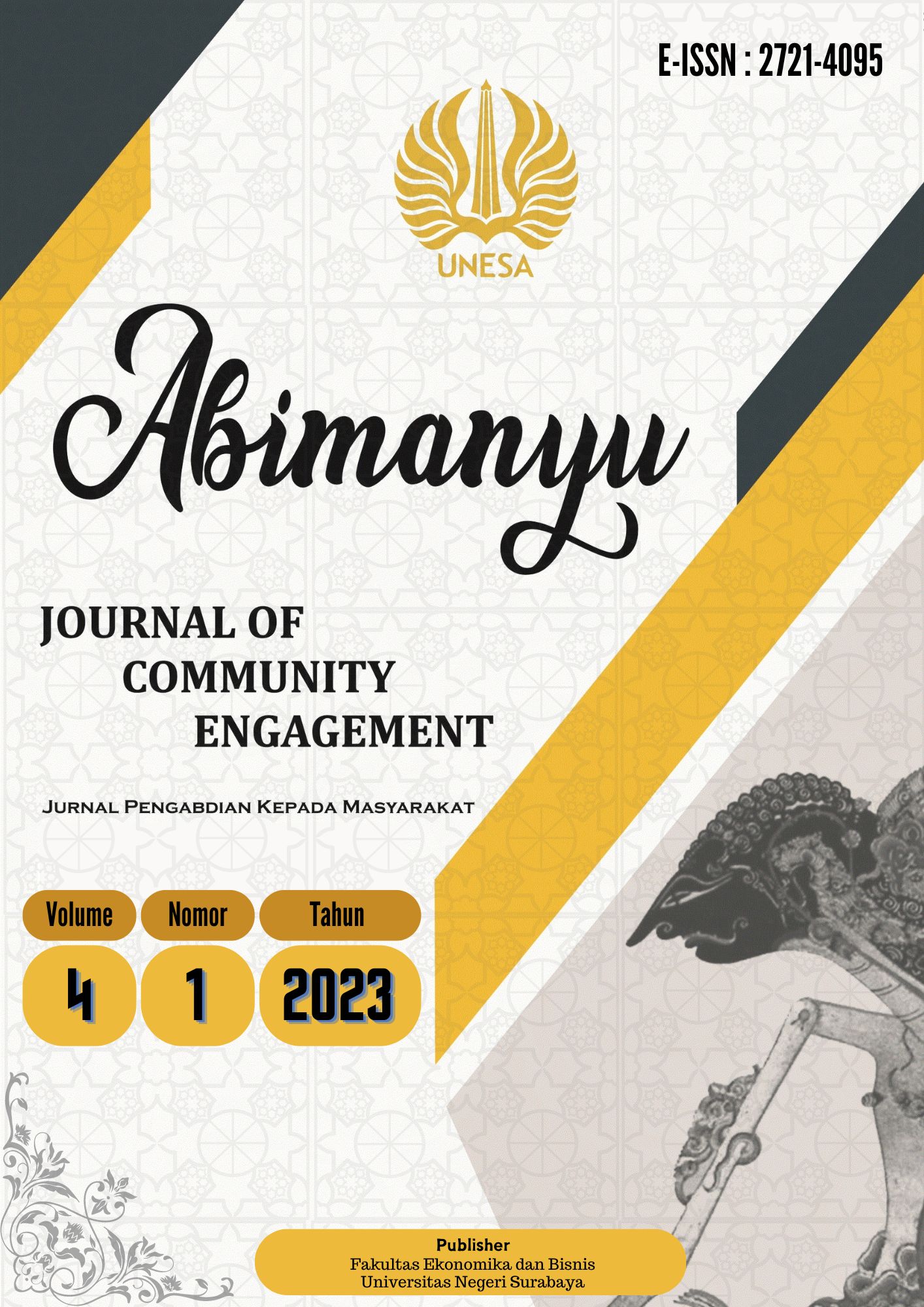Pelatihan Pengembangan Bahan Ajar Interaktif Berbasis Kodular Bagi Guru Di Smk Tunas Wijaya Surabaya
DOI:
https://doi.org/10.26740/abi.v4n1.p39-45Keywords:
training, development, interactive teaching materials, kodular, teacherAbstract
The 2013 revised 2017 curriculum is student-centered and emphasizes students' ability to learn independently, and can communicate information related to the material being studied through a scientific approach as the focus of activities during learning. However, the problem with independent learning is the lack of digital-based teaching materials that can help increase students' understanding, interest, and motivation. The competence of teachers in developing teaching materials that utilize the application of technology is also lacking, so it is necessary to conduct training in the development of codular-interactive teaching materials. The target of this Community Service activity is 20 teachers of the Office Administration and Automation Expertise Program at SMK Tunas Wijaya Surabaya. The results of the codular-based interactive teaching materials training showed that 87% of participants stated that they would apply what they had studied during the training activities into their learning.
Keywords: training, development, interactive teaching materials, kodular, teacher
References
Afifulloh M., dan Cahyanto, B. 2021. Analisis Kebutuhan Pengembangan Bahan Ajar Elektronik di Era Pandemi Covid-19. JPDI (Jurnal Pendidikan Dasar Indonesia), 6(2), 31. https://doi.org/10.26737/jpdi.v6i2.2515
Hamdani. 2011. Strategi Belajar Mengajar. Bandung: Pustaka Setia.
Mardiana, Isa, Y., dan Ningsih, S. 2020. Pengembangan Bahan Ajar Interaktif pada Mata Kuliah Filsafat Pendidikan. JKTP Jurnal Kajian Teknologi Pendidikan. Volume 3(2): 138-148. DOI: 10.17977/um038v3i22020p138
Mudlofir. 2011. Aplikasi Pengembangan Kurikulum Tingkat Satuan Pendidikan dan Bahan Ajar dalam Pendidikan Agama Islam. Jakarta: Raja Grafindo Persada.
Nurjanah, S. A. 2019. Analisis Kompetensi Abad-21 dalam Bidang Komunikasi Pendidikan. Gunahumas: Jurnal Kehumasan Universitas Pendidikan Indonesia, Volume 2(2): 387-402. DOI: https://doi.org.10.17509/ghm.v2i2.23027
Prastowo, A. 2015. Panduan Kreatif Membuat Bahan Ajar Inovatif. Yogyakarta: DIVA Press.
Downloads
Published
How to Cite
Issue
Section
 Abstract views: 523
,
Abstract views: 523
, PDF Downloads: 363
PDF Downloads: 363





